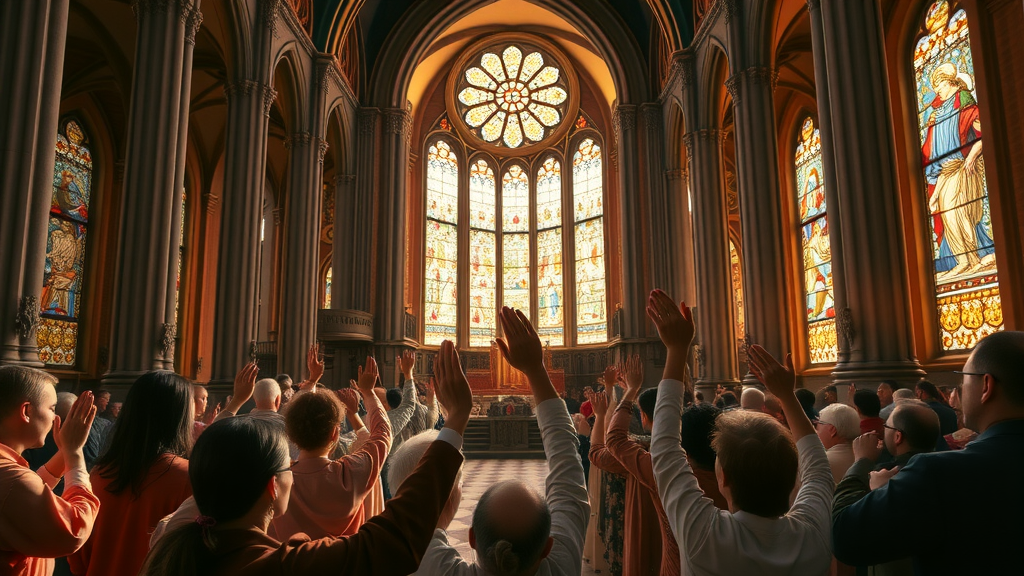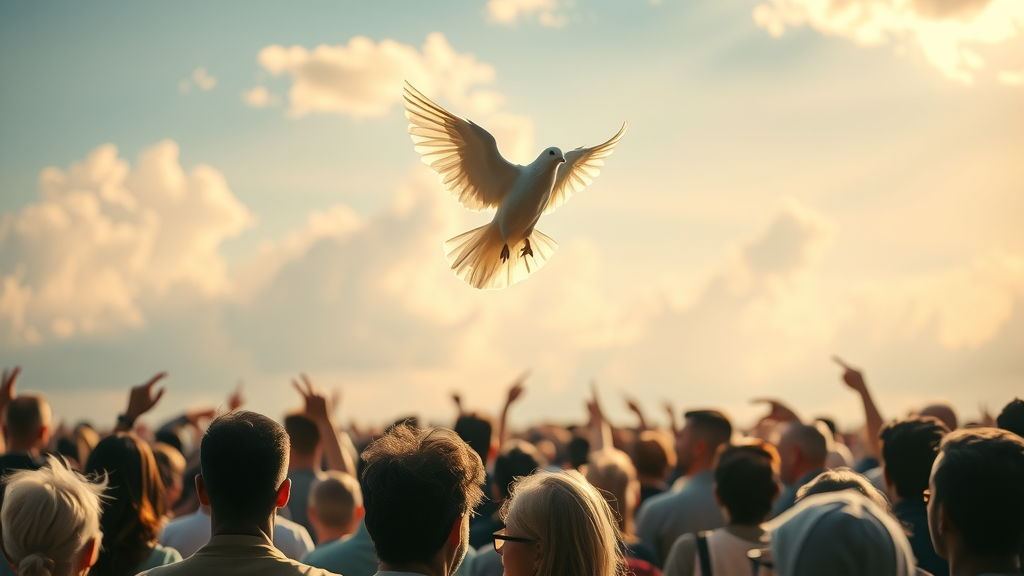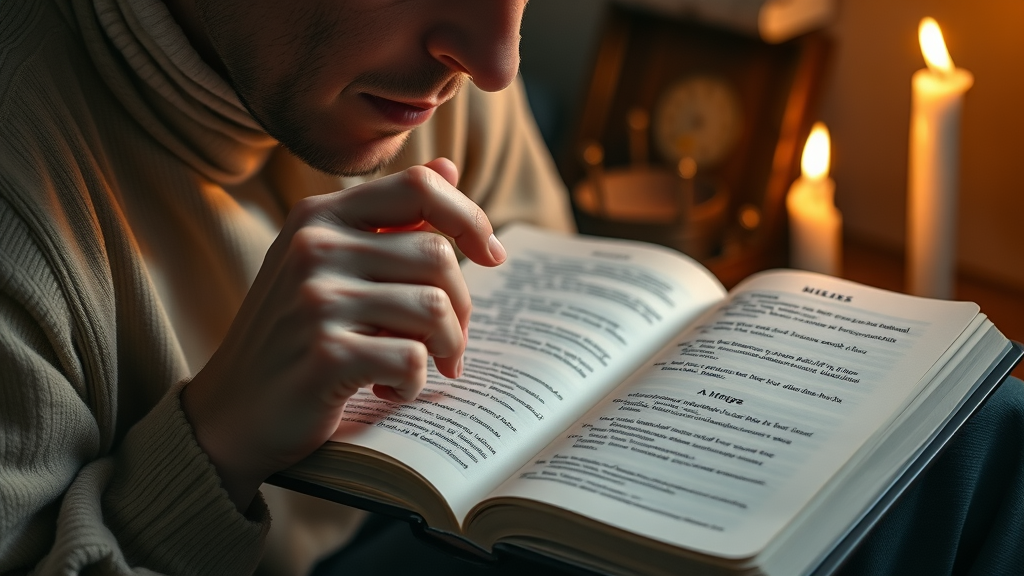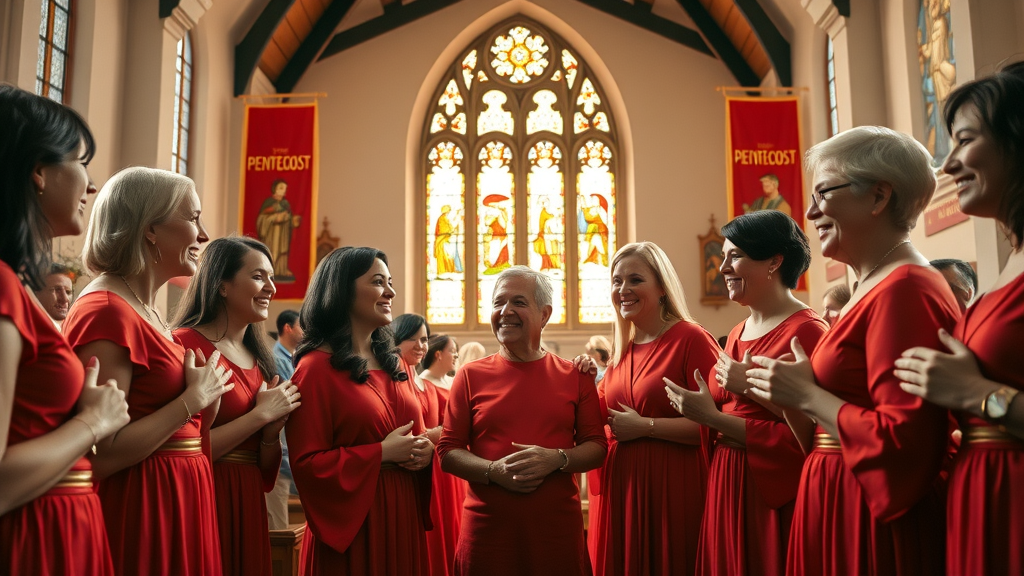Did You Know? Over 2 billion Christians worldwide recognize Pentecost as a turning point in faith and spiritual empowerment.

Pentecost is far more than a biblical story—it's a powerful moment that millions strive to embody in their own lives. This ancient event transformed frightened disciples into fearless leaders, igniting a spiritual fire that burns worldwide even today. With faith traditions stretching from Jerusalem's upper room to modern churches draped in red, the coming of the Holy Spirit remains a source of inspiration and empowerment for believers hoping for revival and fresh purpose. If you’ve ever longed to feel deeply connected to divine power or wondered how to fill your life with renewed energy and courage, this guide will show you how. Drawing wisdom from the Acts of the Apostles and living church tradition, you’ll learn to step into your own Pentecost—one that brings clarity, boldness, and a lasting sense of spiritual fullness.
- Why Pentecost is a pivotal moment for Christians globally
- How to lay the groundwork for your own encounter with the Holy Spirit
- Step-by-step practices to invite and sustain spiritual transformation
- Modern customs for celebrating Pentecost Sunday
- Actionable tips, inspiring quotes, and essential Scriptures for your journey
Understanding Pentecost: A Journey Toward Spiritual Renewal
- Why Pentecost is pivotal in the Christian tradition: Pentecost, also called the Feast of Pentecost , marks the fiftieth day after Easter and commemorates the outpouring of the Holy Spirit on Jesus' followers. This event is recognized as the moment when the Church—known as the body of Christ —received its foundation and mission for the world. For Christians, experiencing Pentecost personally is an invitation to spiritual renewal and empowerment beyond religious ritual.
- The symbolism and significance: Holy Spirit and its impact: When the Holy Spirit descended during Pentecost, it appeared as tongues of fire and a mighty wind, filling the disciples with courage, wisdom, and the supernatural ability to communicate across cultures. This symbolic fire represents purity, transformation, and the vibrant energy Christians seek to receive anew. The day of Pentecost also fulfills Old Testament promises of God’s Spirit resting on all people, making every believer a temple of divine presence.
- Connecting the historical Pentecost with modern personal experience: Today's churchgoers reenact and reinterpret Pentecost’s meaning within their lives. By developing expectant hearts, engaging in sacred traditions, and opening themselves to community, individuals and congregations experience spiritual breakthrough—their very own “upper room” moment. Embracing Pentecost means stepping into a lifelong journey of spiritual growth, joy, and transformation, just as the first believers did.

The Origins of Pentecost: Tracing the Acts of the Apostles
Acts of the Apostles: The First Pentecost and the Coming of the Holy Spirit
- Biblical background: Acts 2 and the upper room: The story of Pentecost unfolds in Acts of the Apostles chapter 2. After Jesus Christ’s resurrection, his disciples gathered in an upper room in Jerusalem, waiting in prayer as He had instructed. On the fiftieth day —now known as the day of Pentecost —a sudden sound like a mighty wind filled the whole house , and tongues as of fire rested on each disciple. This powerful imagery signals the descent of the Holy Spirit, empowering ordinary men and women for extraordinary purposes.
- How the coming of the Holy Spirit shaped the early Church: Immediately filled with the Holy Spirit, the apostles began to speak in many languages so that all present heard the good news in their own tongue—the miracle of Pentecost. This event marked the birthday of the Church , transforming the fearful followers into bold preachers. Thousands responded to their message, forming a new community devoted to teaching, fellowship, and prayer, ushering in a movement that would cross continents and generations.
Prepare for a Personal Pentecost: Setting the Spiritual Stage
Step 1: Prayerful Anticipation and Waiting
- The role of expectant faith in welcoming the Holy Spirit: Just as the first disciples waited with anticipation in the upper room, cultivating a spirit of patient expectation is essential for anyone seeking a personal Pentecost. Set aside moments each day for quiet prayer, focusing on your desire for spiritual renewal and openness to the gift of the Holy Spirit. Remember, anticipation rooted in faith draws us closer to the heart of God and makes room for transformative encounters.
Step 2: Deepening Understanding Through Scripture
- Key passages about Pentecost and their meaning: Immersing yourself in Scripture is crucial for experiencing Pentecost authentically. Read aloud Acts 1-2, as well as passages about the Spirit’s promise (Joel 2:28-29, John 14), to anchor your heart and mind in God’s plan. Reflect on how the disciples’ journey parallels your own longing for courage, vision, and spiritual fire.
- Reflecting on the acts of the apostles as a blueprint: Use the acts of the apostles as your guide—notice how they waited, prayed, and responded boldly to the Spirit’s promptings. Their faithfulness set the stage for miracles, guiding you to prepare your heart and life for similar transformation.

Step 3: Seeking Fellowship and Unity
- How Christian community mirrors the Pentecost experience: The original Pentecost took place in the midst of a gathered group—believers united in prayer and purpose. Today, meaningful fellowship helps sustain spiritual passion and provides encouragement when seeking the presence of the Holy Ghost . Join a small group or participate in congregational worship; as you connect with others, you reflect the unity, love, and dynamic faith seen in the upper room. Spiritual renewal flourishes most when individuals are rooted in a nurturing, Spirit-filled community.
Receiving the Holy Spirit: Igniting Your Own Pentecost
Step 4: Openness to the Holy Spirit
- Practical ways to cultivate spiritual receptiveness: Create space in your daily routine to pause and listen—whether through meditation, music, or silent contemplation. Ask the Holy Spirit explicitly to come and fill you, surrendering your agenda for divine guidance. Practice discernment by noticing gentle nudges, insights, or peace that mark the Spirit’s presence. You may even journal your prayers and responses to track your personal journey of transformation, just as the apostles did on Pentecost.
Step 5: Living Out the Gifts of the Spirit
- Identifying and empowering spiritual gifts after Pentecost: The coming of the Holy Spirit on Pentecost was marked by supernatural gifts: speaking in different tongues, prophecy, boldness, healing, and more. Take time to recognize how spiritual gifts manifest in your life—whether in encouragement, teaching, service, or leadership. Seek trusted mentors or church leaders to help you discern and develop these gifts for the benefit of your family, community, and the wider world.
- Daily practices to maintain Pentecost’s momentum: Maintain the Spirit’s fire by nourishing your faith through regular worship, reflection, acts of kindness, and humble service. Let the memory of your own Pentecost guide you to courageous action even beyond the “feast of weeks” so the presence of the Holy Spirit is reflected in every facet of your daily living.

Celebrating Pentecost Sunday: Modern Traditions and Rituals
Pentecost Sunday customs and the symbolism of red
- Why do we wear red during Pentecost Sunday? The tradition of wearing red on Pentecost Sunday honors the fiery tongues that signified the arrival of the Holy Spirit at the first Pentecost. Red represents energy, transformation, and the purifying fire that fills believers, mirroring the miraculous events described in Acts.
- Contemporary church practices around the world: Many churches hold vibrant services where members don red garments, sing joyful hymns, and pray for fresh outpourings of the Spirit. Some communities arrange processions, decorate sanctuaries with flames or doves, and host multicultural worship to capture the unity and diversity experienced on the first Pentecost. These rituals keep the memory alive, ensuring each generation can experience the transformative power of Pentecost anew.

What three things happened during Pentecost?
- The arrival of the Holy Spirit as tongues of fire descended upon the gathered disciples.
- The disciples began to speak in multiple languages , a miracle that allowed everyone present to hear the message of Jesus in their own tongue.
- Mass conversion and birth of the Church : Moved by the apostle Peter’s speech, about 3,000 people accepted the message and were baptized, which is often referred to as the birthday of the Church .
Summary: Triple transformation of Pentecost
Pentecost transformed frightened followers into bold witnesses, transcended language and cultural barriers, and launched a faith community that would become the global Church. This triple transformation—spiritual empowerment, miraculous communication, and communal birth—remains at the core of Pentecost experiences today.
What do Christians do during Pentecost?
- Attend special Pentecost Sunday services centered on the Holy Spirit’s arrival. These gatherings often include passionate worship, Scripture readings from Acts, and prayers for a fresh outpouring of the Spirit.
- Engage in prayers and readings about the Holy Spirit, seeking personal and communal renewal through study and reflection.
- Participate in community outreach and acts of service, reflecting the generosity and love ignited by the gift of the Holy Spirit. Many churches organize food drives, visit the sick or elderly, and offer support to local charities to embody the living legacy of Pentecost.

Why do we wear red on Pentecost Sunday?
- Red as a symbol of the fire of the Holy Spirit: The color red signifies the fiery tongues or tongues of fire that rested on the disciples, a visible mark of the Spirit’s descent. Wearing red is a vibrant reminder of the transforming energy and boldness imparted by the Holy Spirit .
- Historical traditions and contemporary meaning: The tradition of red dates back centuries and is celebrated globally today, signifying both the historic moment and the ongoing personal experience of Pentecost in believers’ lives. It connects the faithful across generations and cultures in a shared spiritual celebration.
What is the story of the Pentecost?
- Recounting the biblical narrative from Acts of the Apostles: In Acts 2, the disciples and followers of Jesus gathered in Jerusalem, praying together during the Jewish Feast of Weeks . Suddenly, the descent of the Holy Spirit came like a rushing wind and flames, filling them with supernatural courage and spiritual gifts.
- The transformation of fearful disciples into bold witnesses: Empowered by the Holy Ghost , the apostles proclaimed the message of Jesus boldly and began to speak in languages they didn't know, reaching people from every nation. This miraculous moment shattered fear and gave rise to a growing, unified movement marked by love, service, and radical generosity.
Step-by-Step Table: Your Personalized Pentecost Experience
| Step | Biblical Account (Acts 2) | Modern Practice |
|---|---|---|
| 1. Waiting in Prayer | Disciples gather in the upper room, praying in unity | Set aside daily time for intentional prayer and anticipation |
| 2. Receiving the Spirit | Holy Spirit descends as tongues of fire and a mighty wind | Open your heart to the Spirit through worship, meditation, and surrender |
| 3. Manifesting Spiritual Gifts | Disciples begin to speak in various tongues, prophesy, teach | Discern, nurture, and use your unique spiritual gifts for service |
| 4. Proclaiming and Sharing | Peter preaches; thousands are baptized and join the Church | Share your transformed life and faith story with others |
| 5. Building Community | Believers devote themselves to fellowship, teaching, and service | Participate in group study, acts of kindness, and communal worship |
Quotes on Pentecost and the Holy Spirit
"And they were all filled with the Holy Spirit and began to speak in other tongues as the Spirit gave them utterance." – Acts 2:4
"Pentecost is not a past event, but an ever-present reality." – Modern theologian
Checklist: Practical Tips for Keeping the Spirit of Pentecost Alive
- Daily prayer invitations to the Holy Spirit
- Joining small groups or Bible study focused on the acts of the apostles
- Celebrating Pentecost Sunday with family or congregation
- Acts of kindness inspired by spiritual gifts
- Journaling spiritual progress and prayers answered
Frequently Asked Questions About Pentecost
-
How long after Easter is Pentecost celebrated?
Pentecost is celebrated fifty days after Easter Sunday. This is why it is also called the “fiftieth day” or celebrated on the seventh Sunday after Easter in the Christian calendar. -
Is Pentecost only for Christians?
While Pentecost has roots in the Jewish “ Feast of Weeks ,” Christians celebrate it as the coming of the Holy Spirit and the birth of the Church. The spiritual themes of renewal, community, and empowerment can resonate with anyone seeking transformation, but its liturgical observance is mainly Christian. -
How can I recognize the work of the Holy Spirit in my life?
The presence of the Holy Spirit often brings new peace, clarity, boldness, or spiritual gifts like encouragement or healing. If you feel drawn to acts of love, experience prompted insights, or sense a deep source of courage emerging within, you may be encountering the Spirit at work—just as on the day of Pentecost . -
What Scriptures should I read for Pentecost inspiration?
Read Acts 1–2 for the direct account of Pentecost, Joel 2:28–29 for the Spirit’s promise, and John 14–16 where Jesus Christ speaks about the helper, the Holy Spirit . Reflecting on these texts can deepen anticipation and guide your Pentecost practice.
Key Insights for Experiencing Your Own Pentecost
- Personal transformation begins with openness
- Community and unity catalyze spiritual growth
- Living Pentecost daily through service and love
Embrace Your Pentecost Journey Today
- Reflect on your spiritual readiness and take practical steps toward your own Pentecost experience, embracing the power and guidance of the Holy Spirit in all areas of life.
 Add Row
Add Row  Add
Add 



Write A Comment